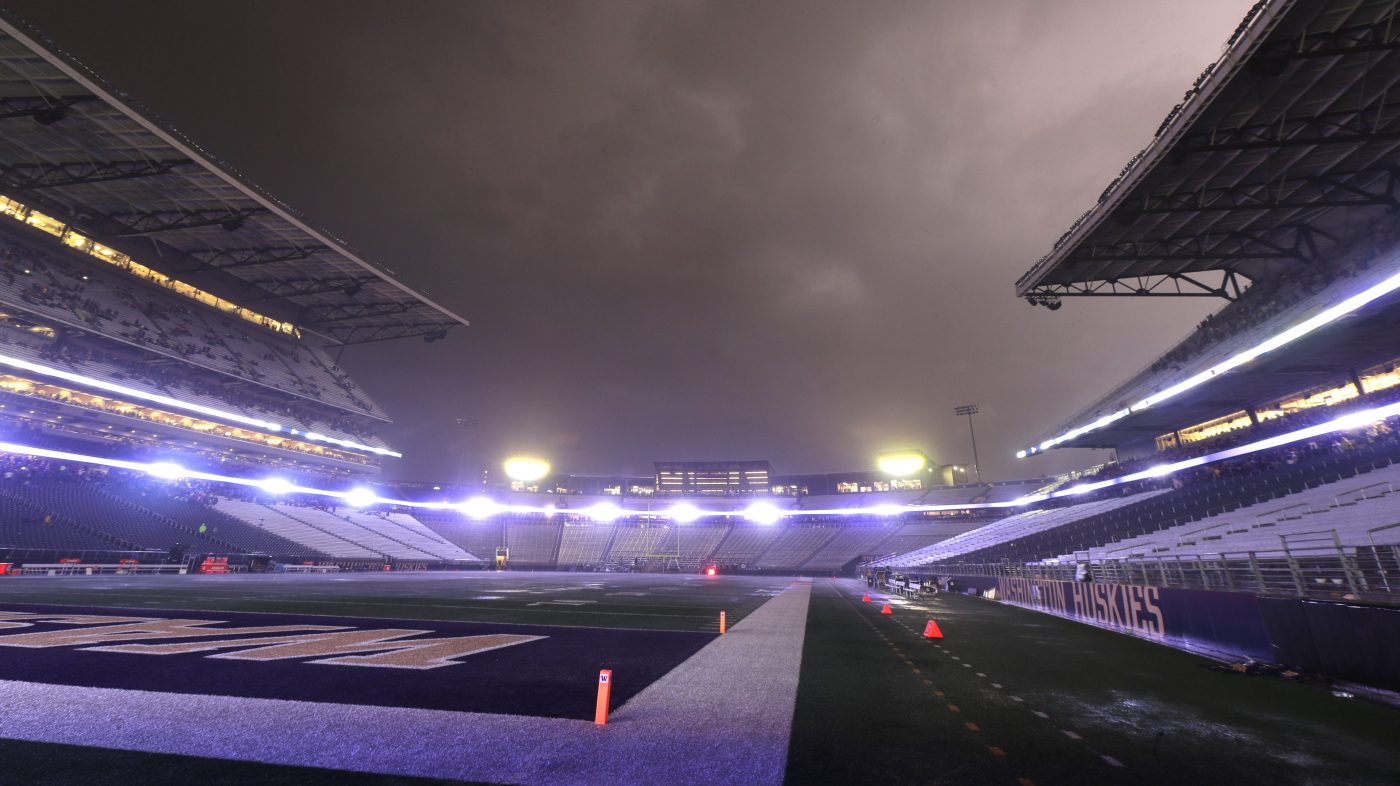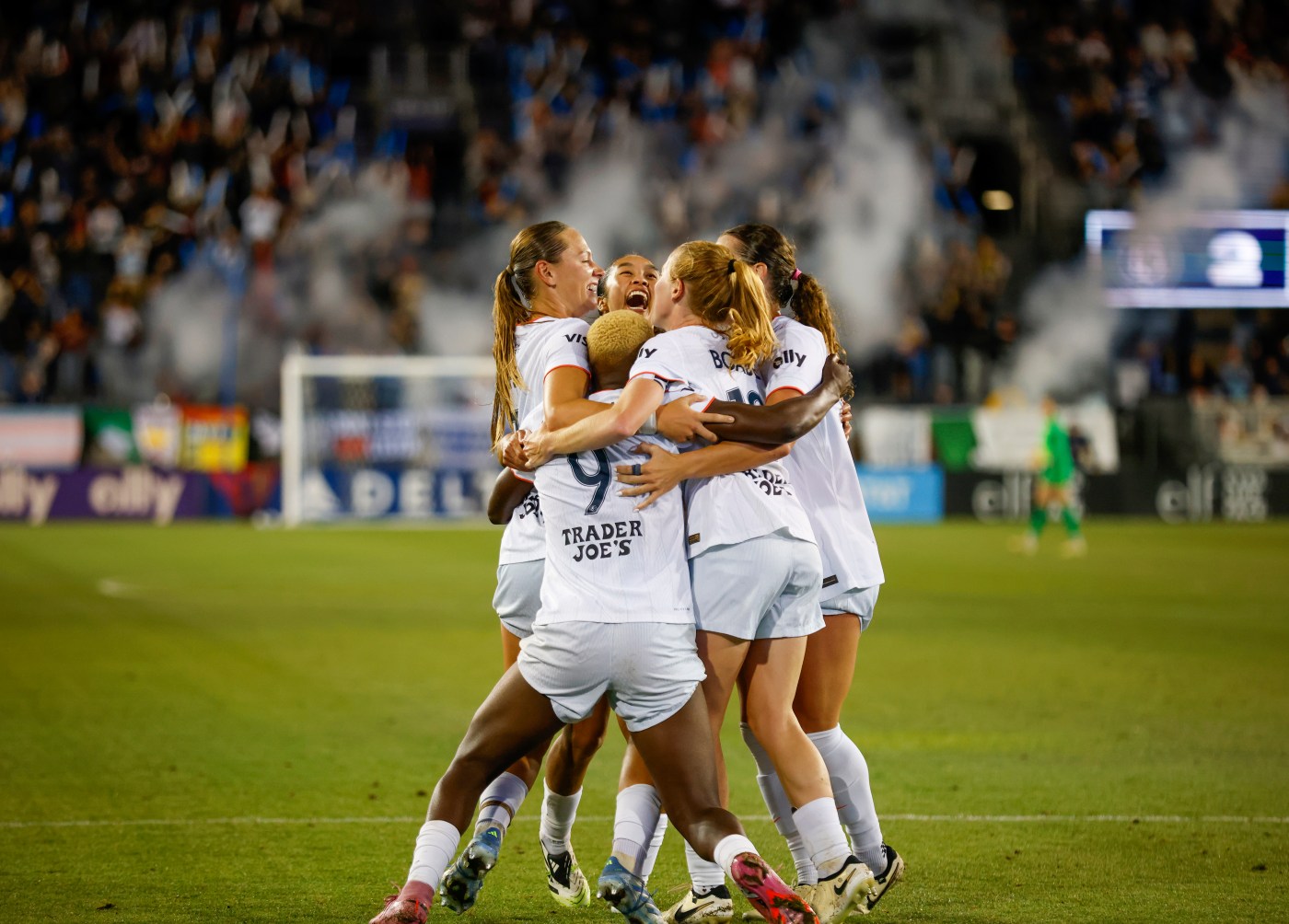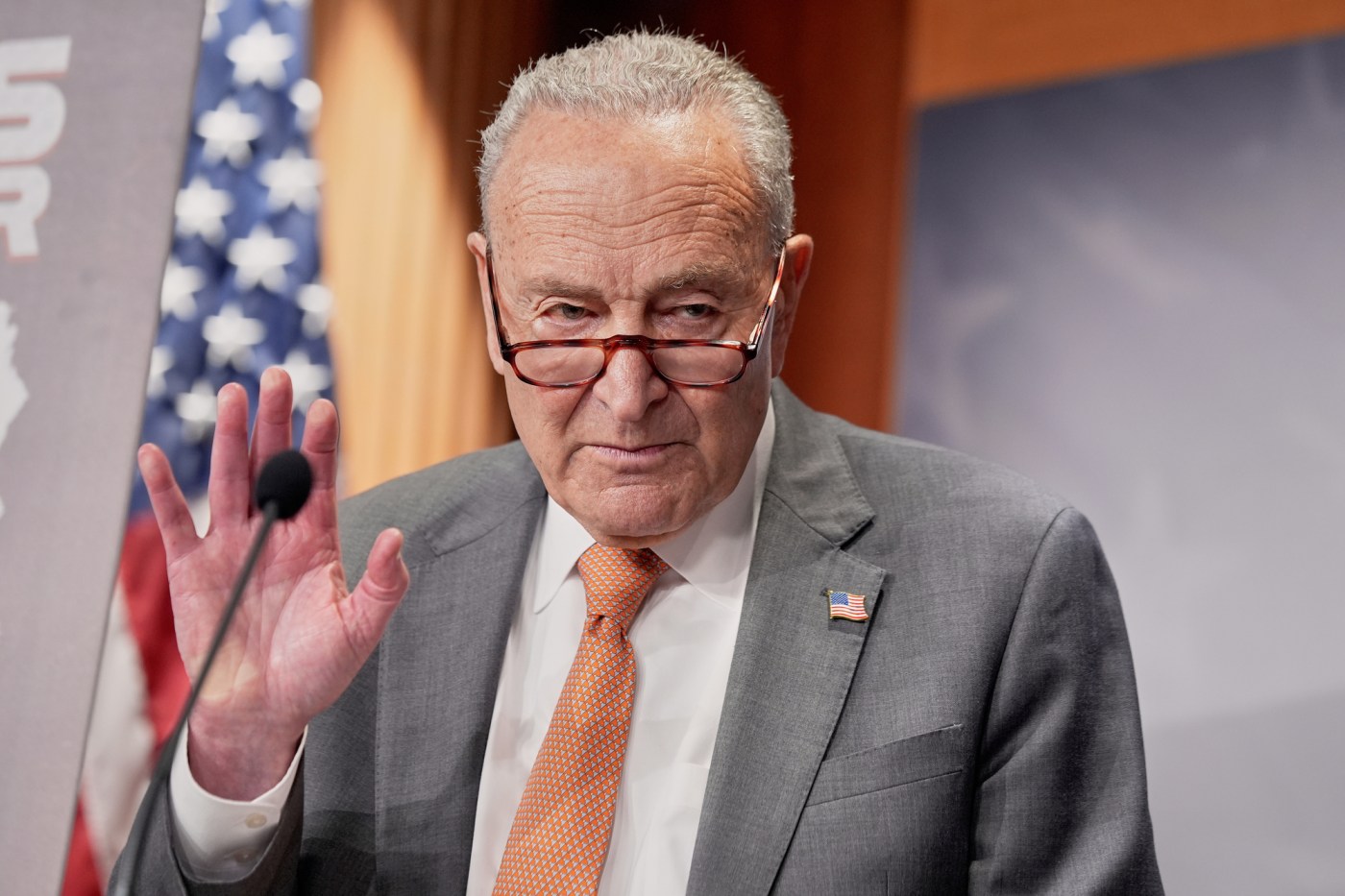The Hotline mailbag publishes weekly. Send questions to [email protected] and include ‘mailbag’ in the subject line. Or hit me on the social media platform X: @WilnerHotline
Some questions have been edited for clarity and brevity.
Despite joining the Big Ten, Washington’s dearth of games against SEC, ACC, and Big 12 schools continues — with no end in sight. Is UW stuck with FCS and Mountain West opponents (or MAC) in perpetuity? Does the athletic department need to be more aggressive? Or is scheduling cupcakes a strategy for getting more wins? — Veronica S
There is no way to spin the issue in a favorable fashion: Washington’s non-conference schedule, both in 2024 and upcoming seasons, is disappointingly devoid of power conference opponents. The Apple Cup offers the only morsel of redeeming value.
Last season, the Huskies faced Weber State, Eastern Michigan and Washington State.
Next season, they will play Colorado State, UC Davis and the Cougars.
They have a few holes to fill in 2026-27 but are not currently scheduled to face an ACC, SEC or Big 12 opponent until Sept. 1, 2029, when they visit Tennessee. (The Volunteers return the trip the following year.)
There are several reasons for the uninspired lineup of non-conference opponents, including changes related to the Big Ten move. The home date with Michigan in 2028, for example, now counts as a conference game.
Also, the Huskies have struggled for years to convince SEC teams to make the trek to Seattle, partly because it’s a long pre-game flight but mostly because SEC coaches are wary of the trip home Saturday night. When combined with the time change, it can disrupt preparation for the following game.
Another factor, especially with regard to the open dates on future UW schedules: Schools are waiting for clarity on the College Football Playoff selection process and the extent to which schedule strength will be weighed.
And now, with the SEC and Big Ten discussing an in-season series, there’s more reason for the Huskies to remain flexible.
Key point: Washington isn’t the only West Coast team competing in the Big Ten to take a wait-and-see approach with regard to non-conference schedules.
USC’s upcoming lineup has only one marquee opponent, the annual series against Notre Dame.
UCLA, which has traditionally played rigorous non-conference schedules, faces Utah in 2025, then goes four years without an opponent from the Big 12 or SEC. (The Bruins have a four-game series with Cal in that window.)
As for Oregon, well, the Ducks are set to play Oklahoma State in 2025-26 and Baylor in 2027-28. Those certainly count as Power Four opponents, but they don’t carry the anticipation (or ratings) that accompany neutral-site showdowns against SEC teams comparable to previous duels with Georgia and Auburn. There are no matchups of that ilk on Oregon’s schedule.
All four West Coast schools are wary of lining up too many losable non-conference games now that their intra-conference lineups include a solid dose of Ohio State, Michigan and Penn State, plus the inherent demands of traveling across the country and, occasionally, playing at 12 p.m. Eastern.
If you love those early-September, circle-the-date games, then root for the Big Ten to formalize the in-season series with the SEC — and for the next version of the CFP to feature a selection model that favors strength-of-schedule.
The Huskies have just enough wiggle in future seasons to add a marquee matchup or two. But they need good reason to risk the loss and, of course, they need willing opponents.
To this point, they have neither.
Is the new Pac-12 missing the boat? Are fans beginning to lose hope as time moves along with no media rights announcement for 2026 and beyond? — @BillyBobV7
The level of concern seems to be rising as April unfolds without an announcement, but I’m not sure the sentiment is justified. Commissioner Teresa Gould never placed a deadline on the negotiations — in that regard, she learned from the mistakes of her predecessor, George Kliavkoff.
Media deals take months to formalize. Media deals that start from scratch take even longer. It’s the difference between renovating your kitchen and building a new home.
The Pac-12 is attempting to navigate three overlapping issues: a media deal for 2025 between Washington State, Oregon State and their network partners; a deal for 2026 and beyond for the rebuilt conference; and the membership issue. Oh, and don’t forget the lawsuit against the Mountain West and the impact that could have.
We strongly suspect there will be clarity by early May on the media rights matter and would advise fans to focus as much on the exposure piece as the revenue.
Assuming it cannot negotiate optimal levels of both, the conference would be wise to secure as many football dates on linear TV as possible, even if the strategy comes at the cost of $1 million (or $2 million) per school per year in revenue.
The Pac-12 is already poor, relative to the Power Four. It cannot afford to be irrelevant, too.
You’ve said cross-country travel is not sustainable for Olympic sports. But the Pac-12 may add Texas State and possibly schools from the American. Would that travel be sustainable? Could the travel hurt the Pac-12 competitively? —@NateJones2009
First, the Hotline considers it unlikely that Memphis, Tulane and South Florida will join the rebuilt Pac-12. The finances simply don’t make sense based on a reasonable projection of the media rights deal, which would have to be lucrative enough to offset the increased travel costs for those schools.
Texas State could be — and should be, in our estimation — the conference’s No. 1 target. It’s located in San Marcos, which is essentially halfway between Austin and San Antonio.
It’s not close to Corvallis, Pullman or Boise, obviously.
It’s a two-hour flight, and 30-minute drive, from Denver International, the easternmost major airport within the conference footprint. (DIA is an hour from Colorado State’s campus.)
That’s not nearly as taxing for Olympic sports teams as some of the demands placed on the West Coast schools in the Big Ten and ACC. (We’re assuming Olympic sports teams would play Colorado State and Texas State on the same roadtrip.)
And Texas State could be essential for Pac-12 survival given the need to add an eighth football school.
If we’re being candid, any demands placed on the Olympic sports are a secondary concern for the rebuilt conference. The expansion move must be about football, basketball and revenue.
With regard to the House lawsuit settlement, there seems to be pushback on the roster limits by the judge. Are you able to sort this out and will the roster limits stand? — @jimmy0726
Judge Claudia Wilken said last week at the settlement hearing in Oakland that cutting roster spots should be a gradual process, over years, not a giant guillotine dropped on dozens of sports at dozens of schools.
(The settlement allows for more scholarships to be awarded but reduces the total roster size, which means walk-ons are vulnerable to losing their spots.)
The NCAA pushed back on Wilken’s request and did not revise that aspect of the settlement — a tact that seems harsh but is rooted in reality. The schools began the process of cutting roster spots months before the settlement hearing in order to give athletes a chance to find new homes. Had they waited until April or May, the opportunities would have been agonizingly limited.
Could Wilken reject the final version because it does not include a grandfather clause to benefit walk-ons? Perhaps. But we suspect she will approve.
If she doesn’t, next-level mayhem will descend on college sports.
Should the Big Sky conference offer membership to the three Utah schools in the WAC? — @cougsguy06
You are referring to Utah Valley, Utah Tech and Southern Utah, and it’s not an issue the Hotline has considered in depth over the years.
Related Articles
Recruiting: The Iamaleava impact, Washington State’s roster remake and Cal’s rough week
How Deion Sanders’ proposal helps solve one of college football’s biggest problems
Big 12 commissioner Brett Yormark doubles down on hoops as media strategy
NCAA chaos: Antitrust lawsuits, transfer portal could create nightmares
Spring transfer portal: Nico Iamaleava’s fit at USC, UCLA, plus other needs
Planting the Big Sky flag in the Beehive State would have some benefits, particularly in recruiting, but we aren’t sure they outweigh the larger issue: cash.
If adding the three schools would result in smaller annual revenue shares for the current schools, the idea is dead-on-arrival.
The Big Sky announced an extension of its media deal with ESPN earlier this year. Commissioner Tom Wistrcill is sharp. If expansion made financial sense, he would have acted on the Utah schools before finalizing the extension.
Should Washington State fans be concerned about the men’s basketball team with regard to the transfer portal comings and goings? — @CelestialMosh
Yes, for sure. To this point, the Cougars have landed one player from the portal, guard Jerone Morton from Morehead State, but lost their top-three scorers to the portal.
The concern should not be limited to the 2025-26 basketball roster, however.
These are challenging times for the Cougars in football, as well. They have a home with the new Pac-12, which is the most important matter. But fielding competitive rosters within the reconstructed conference won’t be easy.
Whether the topic is NIL resources or athletic department balance sheets or community support, WSU is not well-equipped to thrive in comparison to other schools in the Pac-12, especially Boise State in football and Gonzaga in basketball.
And it remains unclear to the Hotline whether the new university president, Betsy Cantwell, will play to win with respect to resource allocation. We suspect that’s the case but need evidence.
What’s going on in Berkeley with all the athletes entering the portal? — @Olibbey1
Cal’s football and men’s basketball programs have been hit hard by attrition this week, with the former losing tailback Jadyn Ott (and the entire running back room) and the latter losing star wing Andrej Stojakovic.
Fans are worried, with good reason. The football exodus reflects poorly on new offensive coordinator Bryan Harsin, but we don’t see a unifying theme to the departures. There are enough individual circumstances across the two sports to make conclusions difficult.
That said, don’t ignore the landscape: Power Four schools are rushing to provide massive NIL payments this spring before the House settlement takes effect July 1 (if approved) and creates a soft cap on roster valuations.
The NIL resources in Berkeley are deeper than you might think, but the marketplace is out of control for the moment.
*** Send suggestions, comments and tips (confidentiality guaranteed) to [email protected] or call 408-920-5716
*** Follow me on the social media platform X: @WilnerHotline





